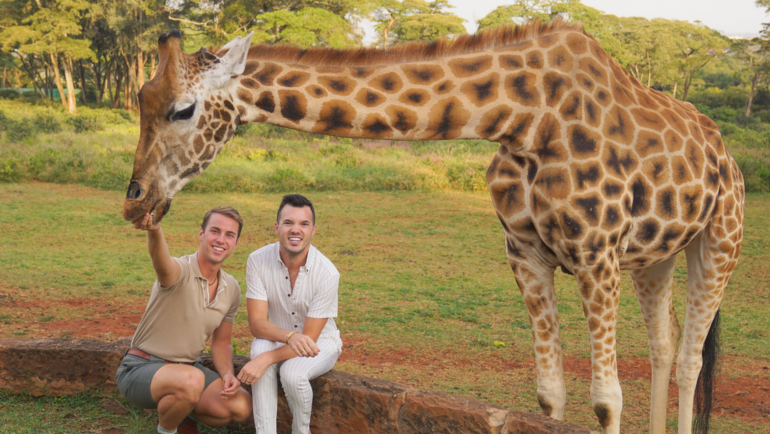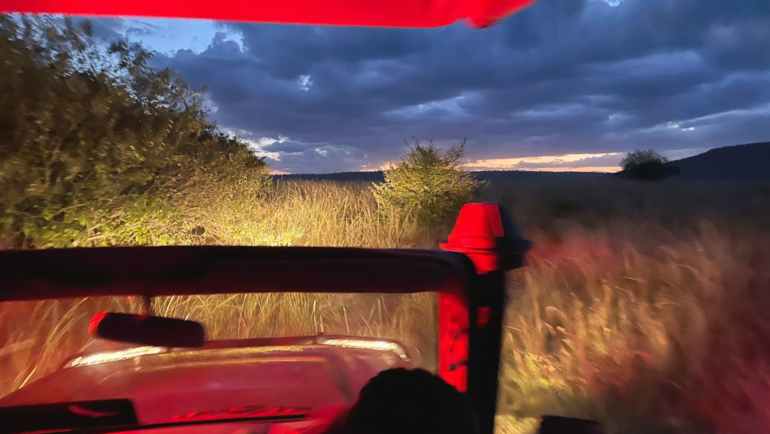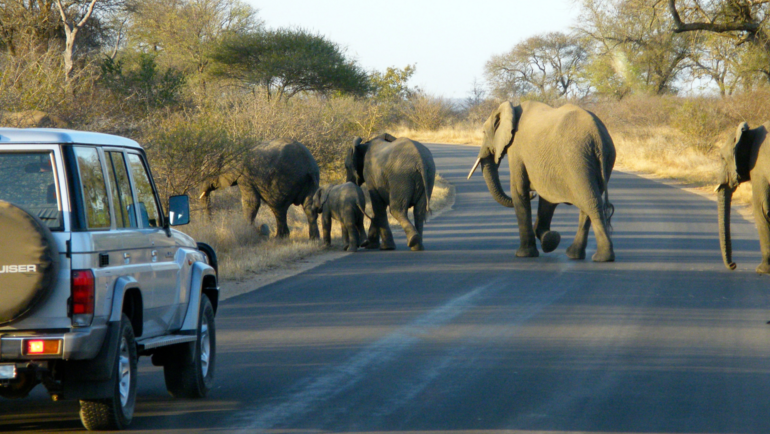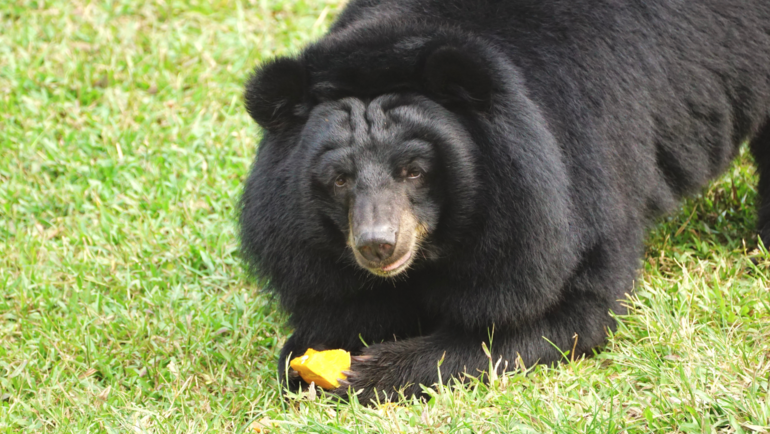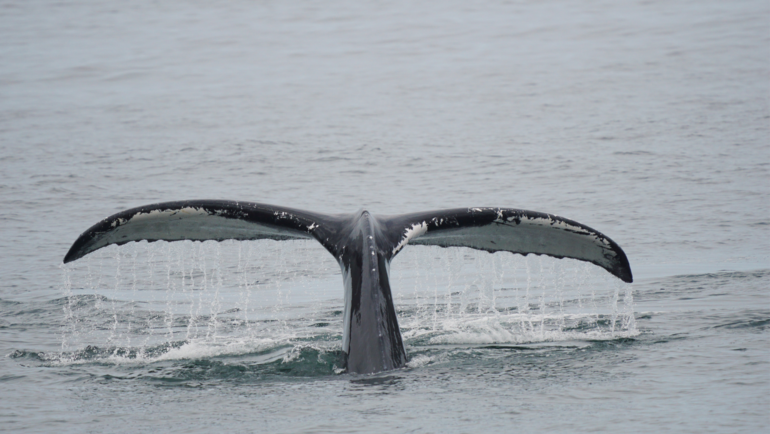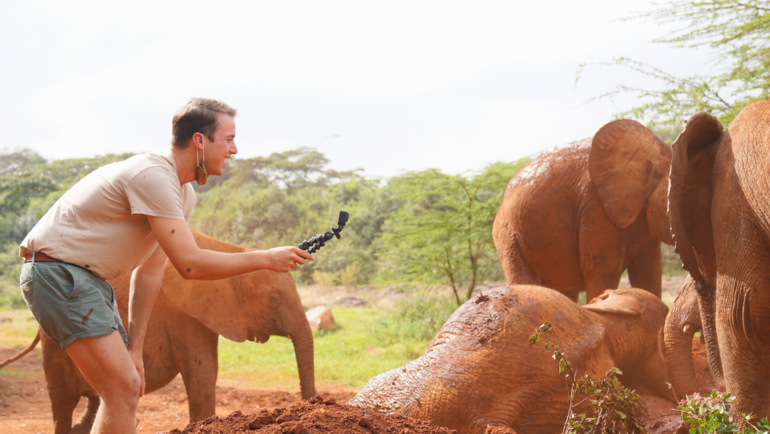America’s great National Parks are famous for their wild animals. From Yellowstone’s bison to the bats of Mammoth Cave, there are countless species to discover around the county. The United State’s largest subtropical wilderness is no exception. Let me just put it this way, the Everglades did not disappoint when it came to animals! Over the course of a few days, I was treated to sightings of all groups; reptiles, amphibians, fishes, mammals, insects, and birds. I was even floored by catching a glimpse of a bounding bobcat as it darted through our campground.
Before you venture into Everglades National Park here are five animals you should have on your radar: American alligator, West Indian manatee, osprey, American crocodile, and great egret. These species are not quite as elusive as the bobcat or even the Florida panther, which did NOT grace us with a fleeting glimpse. In fact, these animals are quite the opposite. As long as you know where to look, I am confident that you should be able to observe these five species in the Everglades wilderness!
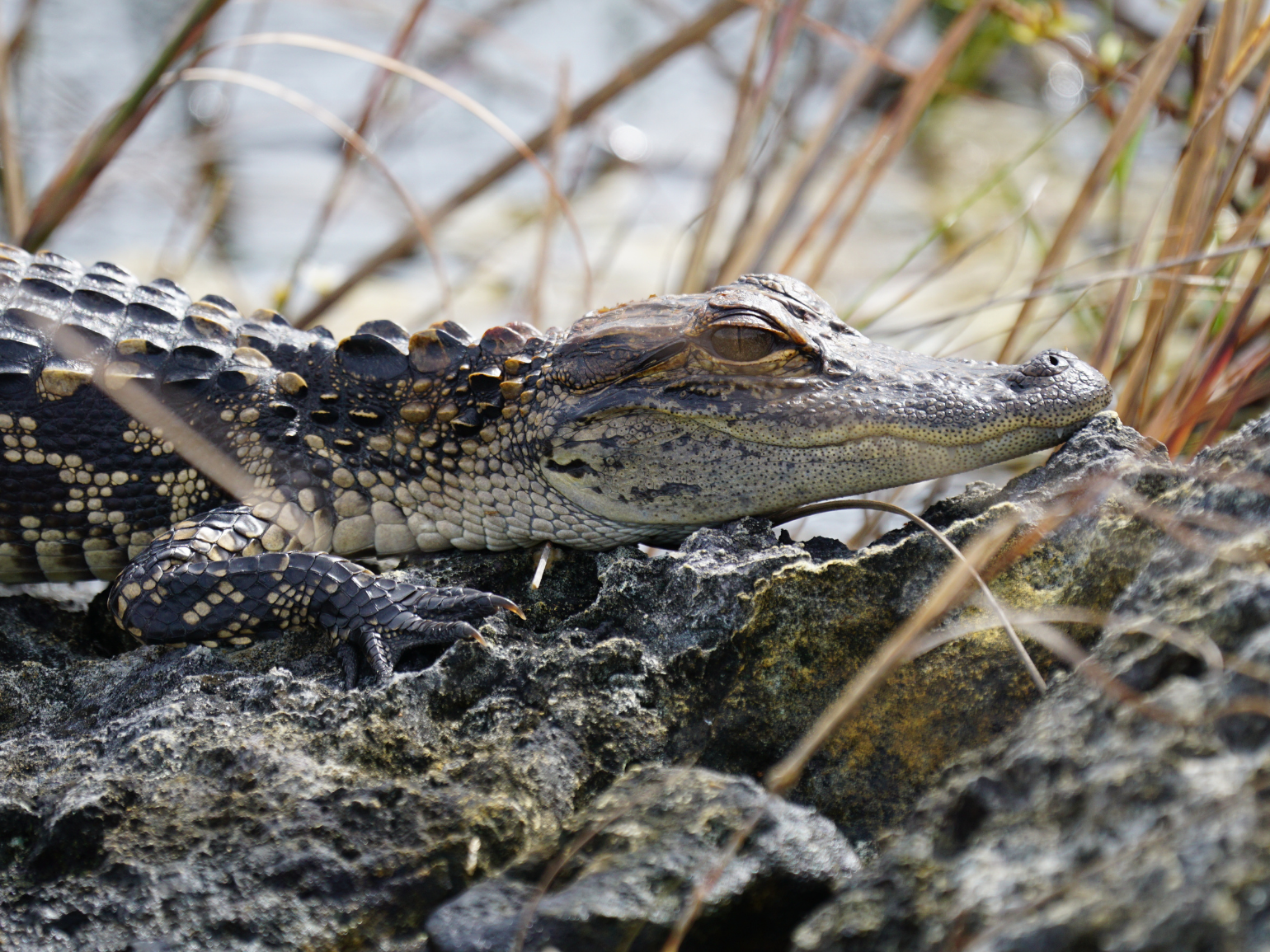
Animals to See in Everglades National Park
1.) American Alligator
No other animal is more closely paired with the Everglades than the American alligator. You can hardly finish saying Everglades Nati…. before picturing an alligator. Though this iconic species is found in far more places than just the Everglades, their range reaches throughout the southeast from North Carolina to Texas. The Everglades happens to be the southern extreme of their range. Alligators primarily inhabit freshwater swamps and marshes and are considered a keystone species. Their presence in an ecosystem plays a critical role in supporting other wildlife. For example, to survive the dry season alligators dig out their own wallow to stay submerged among the sea of drying grass. With males reaching lengths of up to 15 feet, these pools can become quite large. Gator holes stay full of water throughout the year, thus creating an aquatic refuge for a variety of other wildlife. This ecosystem depends on alligators to thrive and support its biodiversity. Once listed as an endangered species, American alligators were nearly wiped out due to hunting and habitat loss. With protection and the addition of the Endangered Species Act of 1973, their populations were able to rebound. By 1987 American alligators populations were stable enough to be removed from the endangered species list and continue to thrive today.
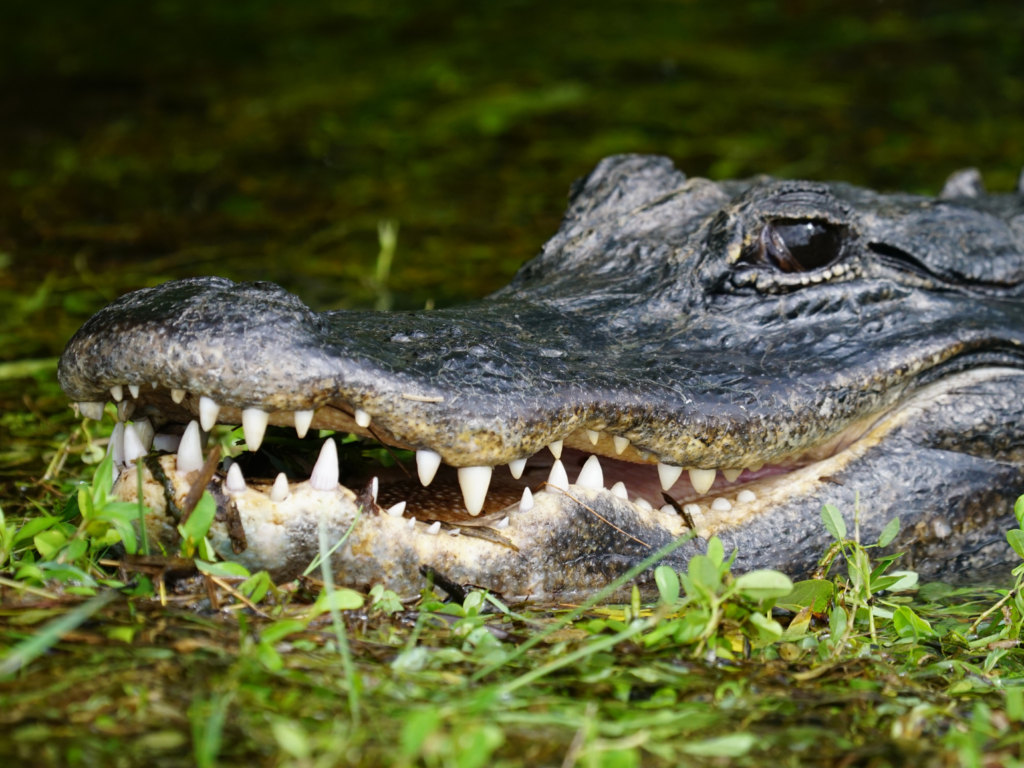
I, like many others, expected to see hundreds of alligators all around the Everglades. But in fact, I only observed gators in one concentrated area. Alligators weren’t nearly as common of a sighting as I had assumed. But at the Shark Valley Visitor Center, on the 15-mile wildlife loop, we managed to see over a dozen gators. They ranged in size from tiny babies to massive full-grown adults. If gators are top on your list of animals to see in the Everglades then I’d recommend visiting Shark Valley. For a true journey for wildlife, I say rent a bicycle and peddle the 15-miles, it makes for a peaceful half-day of slowing down to enjoy every sighting. The entire round trip took us about three hours, as we leisurely biked the level loop. Another option is to take a ride on their guided tram tour, which will drive you around the same loop. The tram is a much quicker option if you’re on a tight schedule, and is much more inclusive for folks of all ages and abilities.
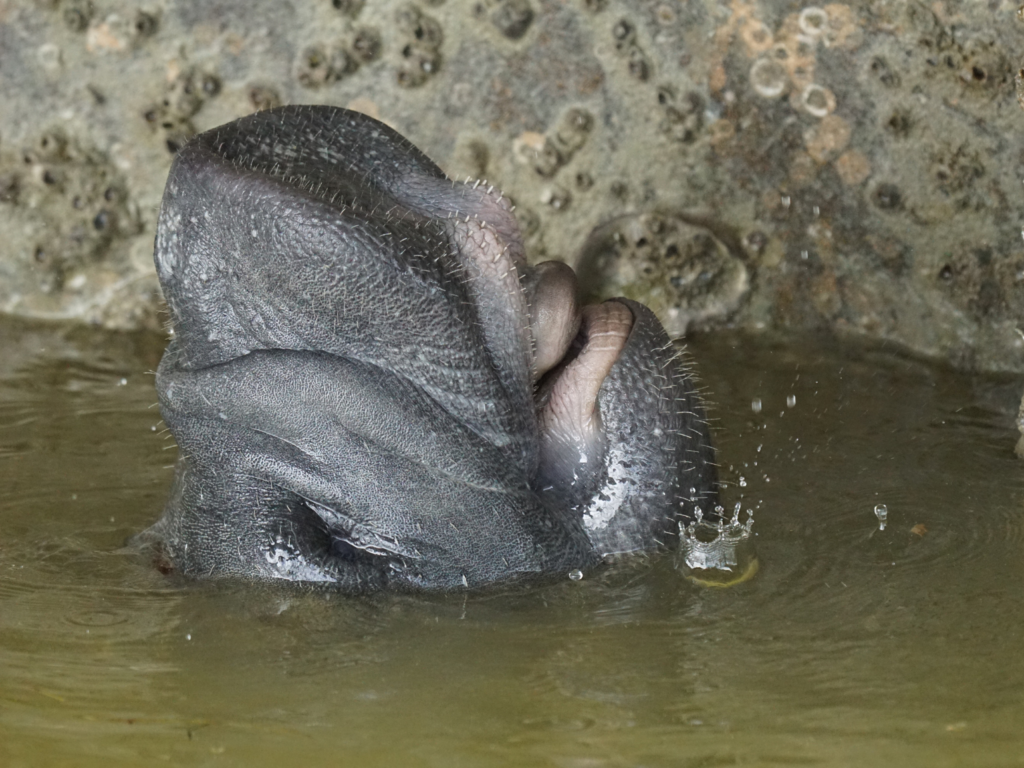
2.) West Indian Manatee
For as long as I can remember elephants have been my favorite animals, but if there were any competition it would be MANATEES. These gentle-mannered marine mammals sure captivate me with their sluggish lifestyles. Manatees are simply endearing and seem to make great best friend material – minus the whole wild animal part of course. Years ago, I become smitten with West Indian manatees after seeing them in the wild for the first time. For more details on how to ethically observe manatees check out, Meeting Manatees in the Everglades. Even though I knew we would likely see manatees again in the Everglades, I wasn’t prepared for the sort of encounter we were treated to.
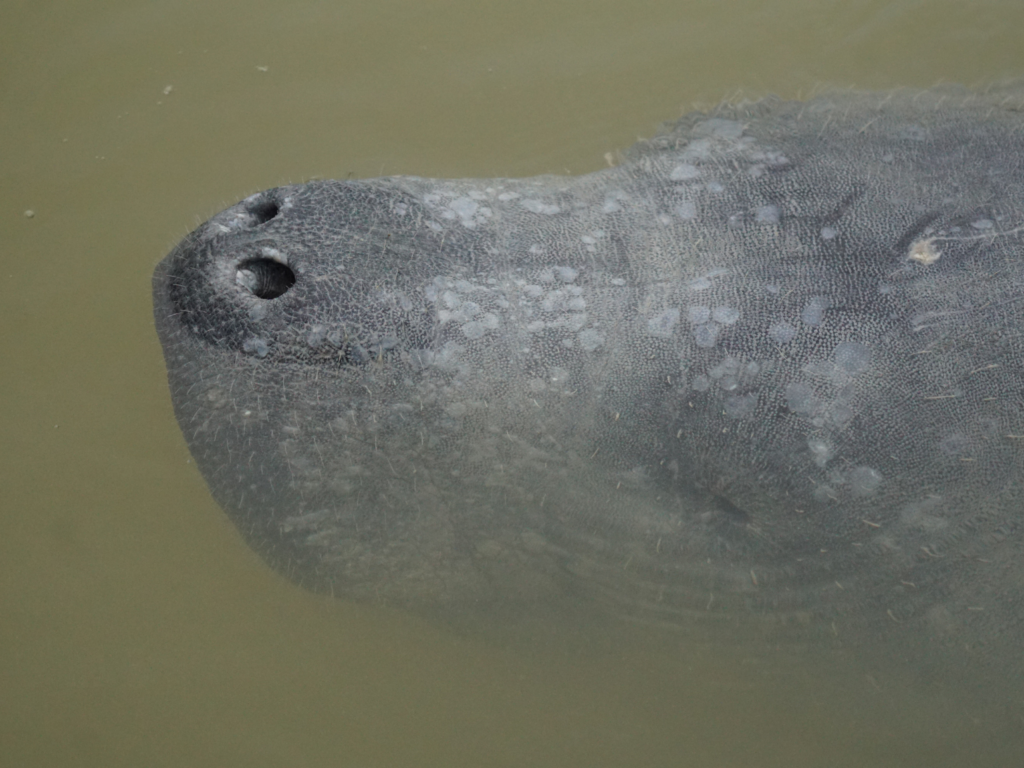
If seeing two-ton gray vegetarians is something that interests you, then a drive to Flamingo Marina is a must! I was floored when we saw dozens repeatedly each morning and afternoon when we stopped by the boat lunch. Oddly enough they were hanging out under the vacant docks pushing and shoving each other for the drops of freshwater from a leaky faucet. They love to drink freshwater, especially over the option of a slurp of salty water.
My favorite part of watching the manatees was waiting for their little nostrils to surface for a breath. Though they can manage to hold their breath for up to 20 minutes, the manatees we watched in the marina would surface every few minutes or so. I was treated to plenty of adorable manatee noses to photograph. Seeing them in the marina meant that we could observe them closely without disturbing them from the docks. Though manatees are now classified as threatened, instead of endangered, they still face significant threats in the wild. Their primary cause of injury and death is from collisions with speeding boat propellers. Always remember to go slow for wildlife, especially for poor sluggish manatees!
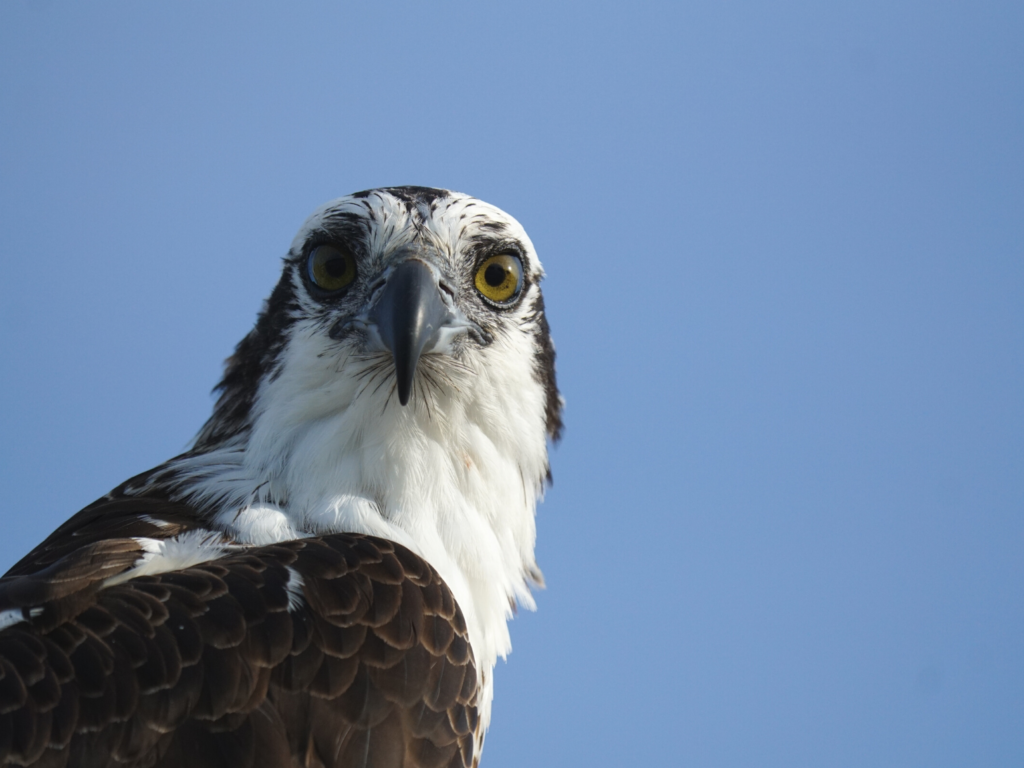
3.) Osprey
Sometimes called fish hawks, the osprey is right at home in the Everglades. This species of raptor is perfectly adapted for hunting and catching fish and is a common sight in the marshes of the Everglades. Osprey really are excellent anglers, studies have shown that their success rate is sometimes as high as 70 percent. Their tactic is to soar high above the water and then dive feet first into the water, sometimes fully submerging themselves to catch their meal. They are so skilled; it typically takes only 12 minutes before they have a successful catch. Their secret is in their feet, they have a reversible toe for extra grasp and rough foot skin to grip slippery fish perfectly.
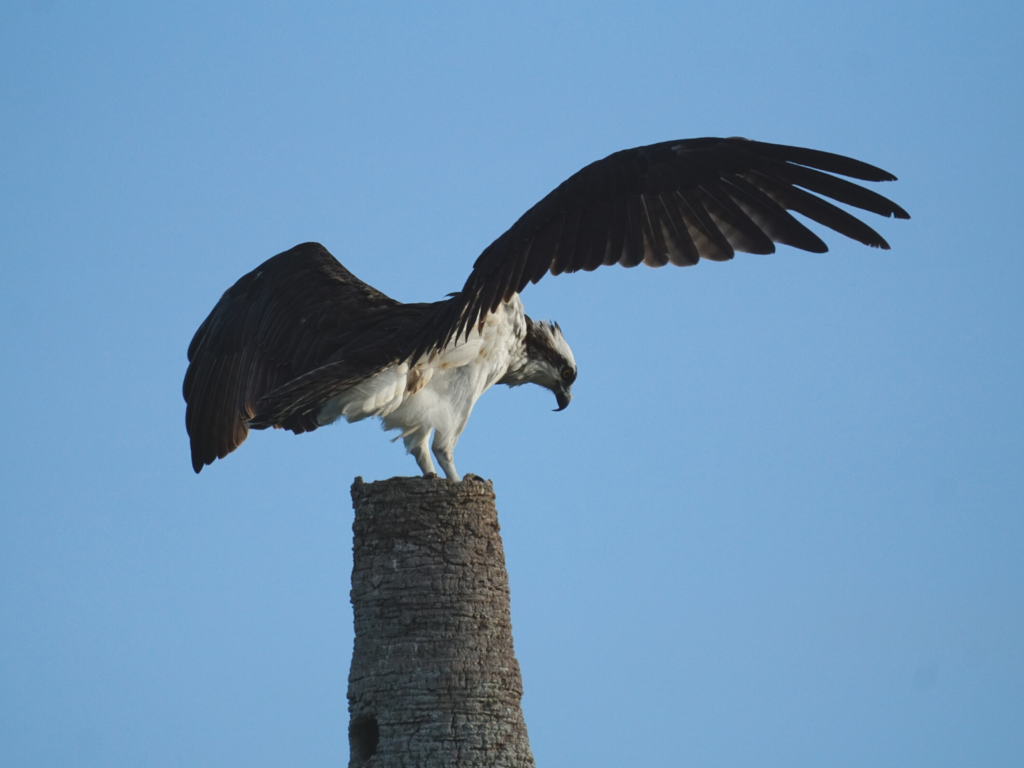
I had the greatest success-viewing osprey from the Everglades Eco-Tents. In fact, right at the damn between the freshwater canal and the salt-water harbor, I found a massive osprey nest just 12 feet off the ground. I was lucky enough to spot an osprey perched on its self-built tangle of branches, my angle gave me the perfect opportunity to snap some close-ups of its beautiful features. Seeing lots of ospreys is a great sign for the Everglades. As an indicator species, their presence is a clear signal of stable fish populations and overall environmental health.
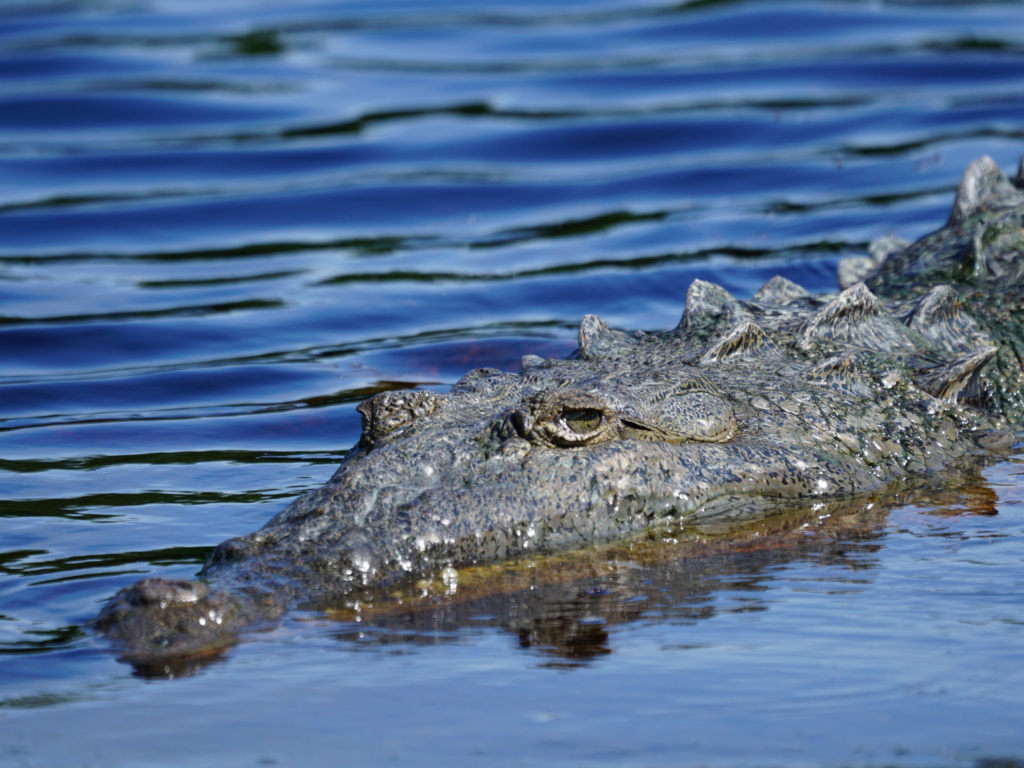
4.) American Crocodile
Of the 23 different crocodilians species of the world, the United States is luckily home to 2 different native species, with south Florida playing host to both. Unlike American alligators, where the Everglades are the southern tip of their range, the Everglades is the northernmost reach for the American crocodile. American crocodiles inhabit the coastal areas of the tip of Florida, but their range includes many Caribbean islands and even countries as far south as Ecuador and Venezuela. This threatened species was top on my list to see in the wild for the very first time. Too most, alligators and crocodiles are interchangeable names for the same animal. Click here to learn the differences between alligators and crocodiles! These two species are very different in appearance and behavior, and the Everglades is the only place in the world where crocodiles and alligators overlap. With a maximum size of around 20-feet in length, these crocodiles are quite an impressive sight. Compared to alligators they have much lighter color scales and have a narrower, more triangular-shaped snout. This species like many in the Everglades exist today because of their protection through the Endangered Species Act. Though they have since been downlisted to threatened, with a recent increase in breeding populations, this species is still a great treat to observe in its natural habitat.
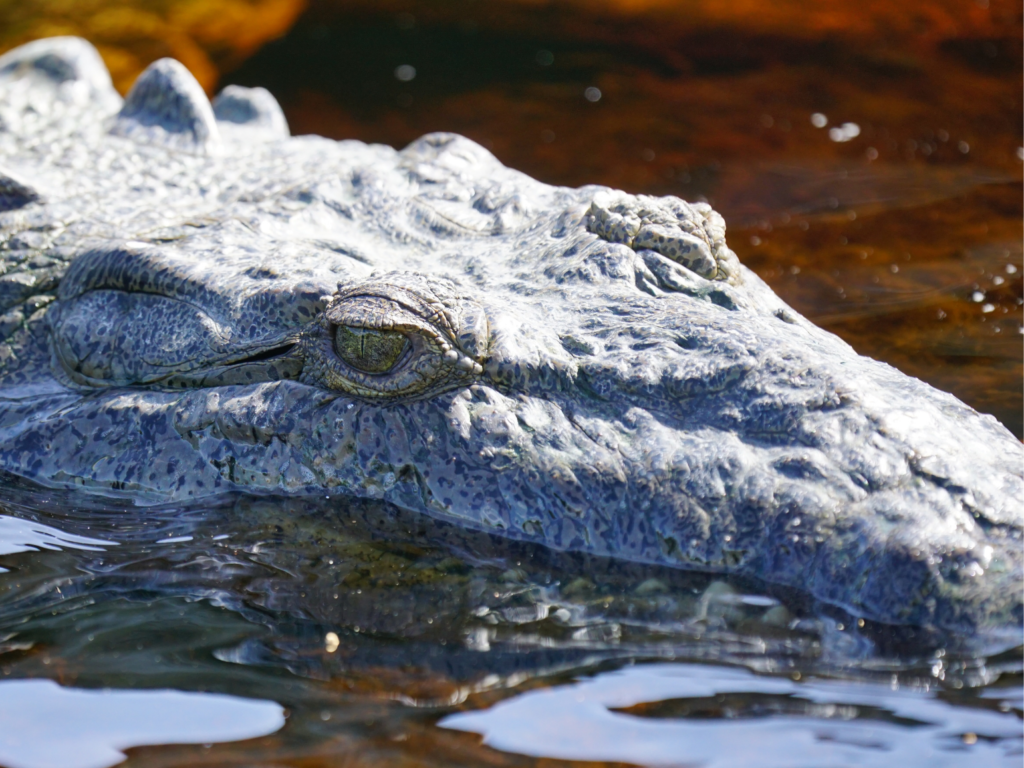
As luck would have it seeing American crocodiles is a relatively common sight if you drive all the way into the park to the southernmost stop – Flamingo Marina. My first sighting was of a very large adult basking on the empty boat ramp in the middle of the marina. Over the course of a couple of days, we managed to see about five different mature adults swimming in and around the Flamingo Marina. Between the manatees and the crocodiles, this wildlife hotspot is well worth the 45 minutes drive through the park.
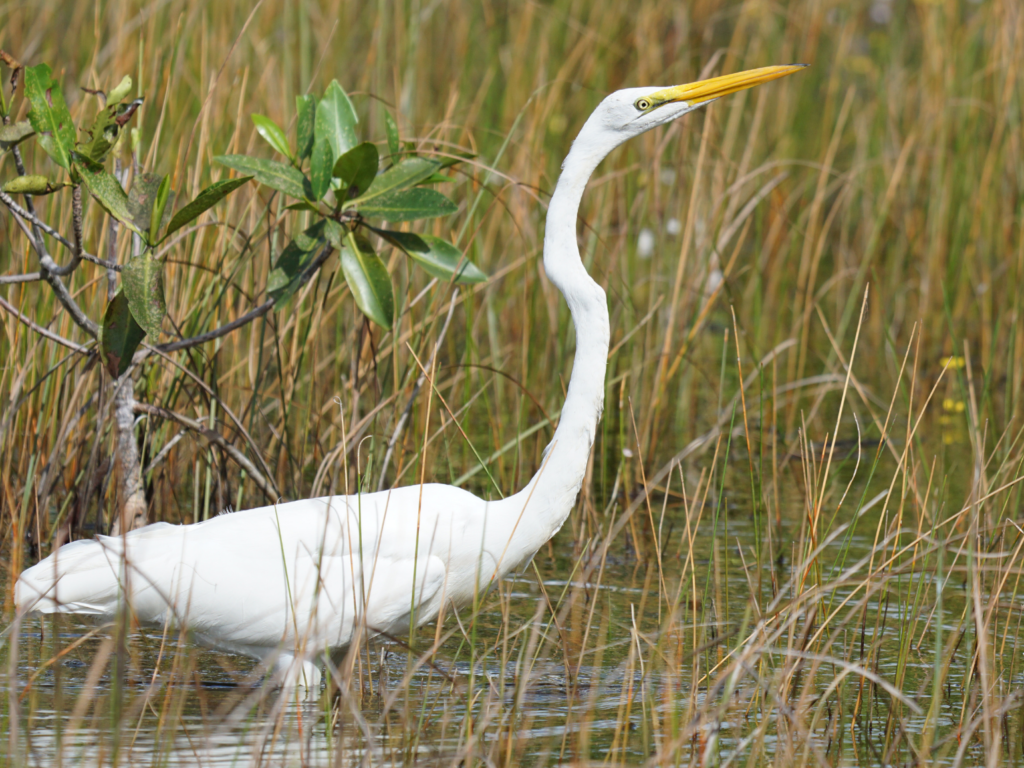
5.) Great Egret
You won’t get two steps into the park without seeing one of these elegant white birds. Standing just over four feet tall, it seems long legs and slender neck consumes their entire body. Their silhouette is unmistakable for that of a skilled hunter. These predators have great patience in wadding and waiting for the perfect time to spear a meal. Great egrets have one of the most efficient means of fishing of all birds. By standing motionless in the shallow water they can detect the slightest motion from a fish and snap it up in a matter of milliseconds. They are known to feed in a variety of wetlands in search of fish, frogs, and aquatic invertebrates.
I would give you a recommended spot where to find great egrets in the Everglades, but honestly, we saw so many that I’d say anywhere there is water is a great place to start. And when you are in the Everglades that is nearly everywhere! Great egrets were a common sight right off the main road between Ernest F. Coe Visitor Center and Flamingo Marina. Just be sure to drive slowly to help protect the wildlife, and keep your eyes peeled for any turtles that might need a hand crossing the road.
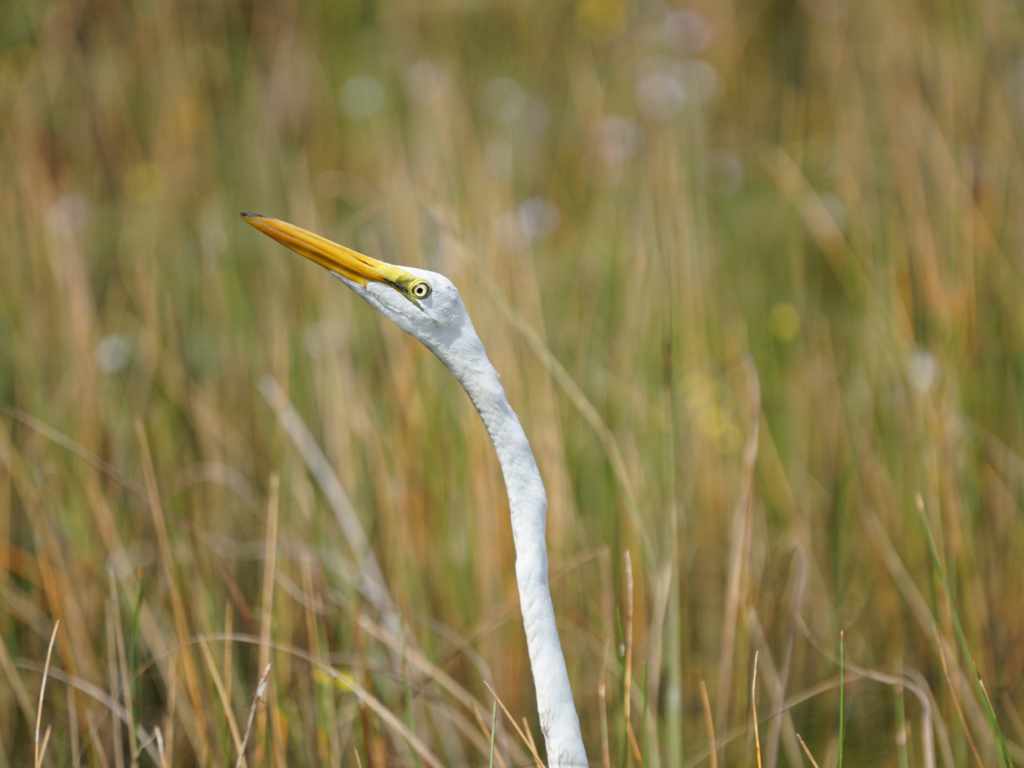
Bonus Species- MOSQUITOES
The true first animal that should come to mind when you think of the Everglades is MOSQUITOS! Let’s face it, they will certainly be the most encountered animals and they’ll be sure to leave an impression. There were times when I thought the hungry mosquitoes would cost me an engagement, as Lance sprinted away trying to outrun the nasty buggers. Growing up in Minnesota, I had my fair share of mosquito bites, but nothing prepared me for the tropical buzzzzz that is the Everglades mosquitoes… We definitely had some “run back to the car” moments, especially around Flamingo, at the southernmost tip of the park. I’ll be honest, the mosquitoes are bad there, I mean REALLY bad. Our trip was during the beginning of November, so not quite far enough into the park’s dry season to curb the mosquito swarms. That all being said, as long as you arrive mentally prepared, and armed with your cherished bug spray then the mosquitoes are just par for the course.
I hope during your journey for wildlife into Everglades National Park that you are treated to as many, and even more, amazing wildlife sightings. To help support the biodiversity of this iconic ecosystem I encourage y’all to check out the amazing work being done by The Nature Conservancy to restore and reconnected the wetland corridor in the Everglades!


